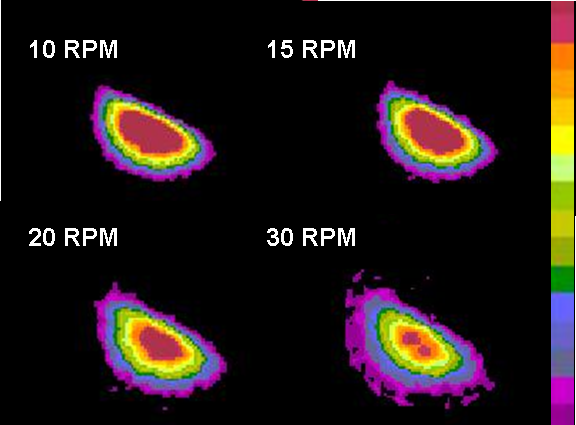Granular Segregation Studies at New Mexico Resonance
 |
|
 |
|||
 |
|
 |
|||
 |
|
||||
 |
|
 |
|||
 |
|
||||
REFERENCES:
Sanfratello, L. and Fukushima, E. Experimental Studies of Density Segregation in the 3D Rotating Cylinder and the Absence of Banding (2009) Granular Matter 11(2), pp. 73-78.
Sanfratello, L. NMR studies of flowing and segregating granular materials. PhD Thesis, University of New Mexico (2007).
Hill, K.M., Caprihan, A., Kakalios, J. Axial segregation of granular media rotated in a drum mixer: Pattern evolution (1997) Physical Review E - Statistical Physics, Plasmas, Fluids, and Related Interdisciplinary Topics, 56 (4), pp. 4386-4393.
Hill, K.M., Caprihan, A., Kakalios, J. Bulk segregation in rotated granular material measured by magnetic resonance imaging (1997) Physical Review Letters, 78 (1), pp. 50-53.
Nakagawa, M., Altobelli, S.A., Caprihan, A., Fukushima, E. NMRI study: Axial migration of radially segregated core of granular mixtures in a horizontal rotating cylinder (1997) Chemical Engineering Science, 52 (23), pp. 4423-4428.
Hill, K.M., Kakalios, J., Caprihan, A. Pattern evolution of granular media rotated in a drum mixer (1997) Materials Research Society Symposium - Proceedings, 463, pp. 227-232.
Nakagawa, Masami, Waggoner, Allen R., Fukushima, Eiichi. NMRI measurements of flow of granular mixtures (1996) NASA Conference Publication, (3338), pp. 251-256.
Nakagawa, Masami, Altobelli, Stephen A., Caprihan, Arvind, Fukushima, Eiichi. Segregation phenomena in a horizontal rotating cylinder (1995) Proceedings of Engineering Mechanics, 2, pp. 1272-1275.
Nakagawa, Masami. Axial segregation of granular flows in a horizontal rotating cylinder (1994) Chemical Engineering Science, 49 (15), pp. 2540-2544.